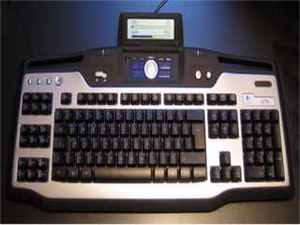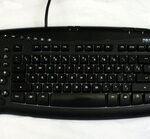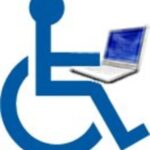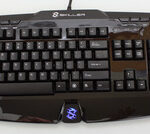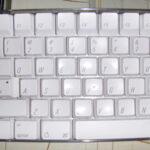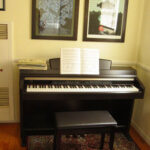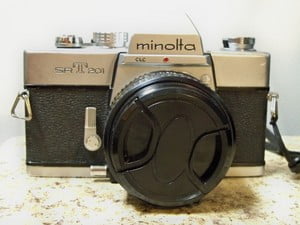A wide range of terms are used when referring to different types of computer keyboards. Read on for an explanation of each of these terms and the different keyboards they describe…
ERGONOMIC: Often when someone refers to an “ergonomic”, “split”, or “natural” keyboard, they mean the type of keyboard which has an empty area in between two sets of keys, which have a different layout intended to be more ergonomic than typical keyboard types.
AT: The abbreviation “AT” can be used when referring to any keyboard made for AT-class (most computers made since the mid-1990s) computers, including standard PS/2 keyboards. However, it is most frequently used to describe keyboards with a large 5-pin connector; these fit some pre-Pentium and Pentium I/II computers, but require an “AT-to-PS/2” adapter to be connected to most computers, because they have a different (PS/2) jack.
USB: Some newer keyboards connect to a computer’s USB port (a small rectangular port) rather than a PS/2 port. This doesn’t offer any great benefit, as humans can’t possibly type fast enough to take advantage of USB’s faster data transmission speeds. Some older computers lack USB ports.
ADB: This refers to a different type of accessory port/jack on some Apple computers which ADB keyboards can be connected to. For computer types which don’t have an ADB port, adapters are available which allow them to be plugged into a USB port.
XT: Keyboards referred to with the abbreviation “XT” can be used with some older types of computers (8086/8088, XT-286) but won’t work with most computers being used at present. Many of them have fewer keys than modern keyboards. AT/XT keyboards are more versatile; they can be used with both older and newer computers and usually have an AT/XT switch on the back. XT and AT/XT keyboard types are more likely to have the larger, backward-“L” shaped “Enter” key, rather than the smaller straight kind on many newer keyboards.
PS/2: Most newer keyboards which don’t use USB have a round, standard PS/2 connector. The majority of computers have a PS/2 keyboard jack; some computer models (especially from the mid/late-1990s) require a “PS/2-to-AT” adapter to use these.
ENHANCED: The term “enhanced” has been used to describe a wide variety of keyboards over the past couple of decades, including both 5-pin and PS/2 types. However, what they have in common is that all of them feature 101 or more keys and a more spread-out key layout than XT, laptop, or mini PS/2 keyboard types.
MINI PS/2: This is a type of very compact, but PS/2-compatible, square shaped keyboard. It is somewhat like a laptop computer keyboard, but different in that it is not built-in to a computer. Most have fewer keys, a short spacebar, and lack a separate numeric keypad.
MULTIMEDIA: Keyboards referred to as “multimedia” are usually fairly new and have extra buttons for instant access to different media applications and/or volume control keys; some have a “mute” button as well.
WIRELESS: Cordless keyboards don’t require a wire connection to the computer but they do need batteries to provide the electricity which normally comes through a PS/2 or USB cable; many use standard “AA” or “AAA” batteries. Most are relatively new, but a few are more than twenty years old, like the IBM PCjr’s wireless keyboard from the early ’80s.
GAMING: These have special gaming-oriented features such as programmable keys, key lighting, and/or extra controls designed for gaming. Most models are dark-colored and connect via USB, a few are wireless.
MEMBRANE: One of the less common keyboard types, membrane keyboards are much different in that they have non-moving pressure-sensitive keys. This makes them easy to clean and impossible to spill liquids into. More details
INTERNET: These include special keys for accessing e-mail and internet related applications; some also have the above-mentioned multimedia keyboard features. A computer must have the right type of operating system for the extra keys to be used.
